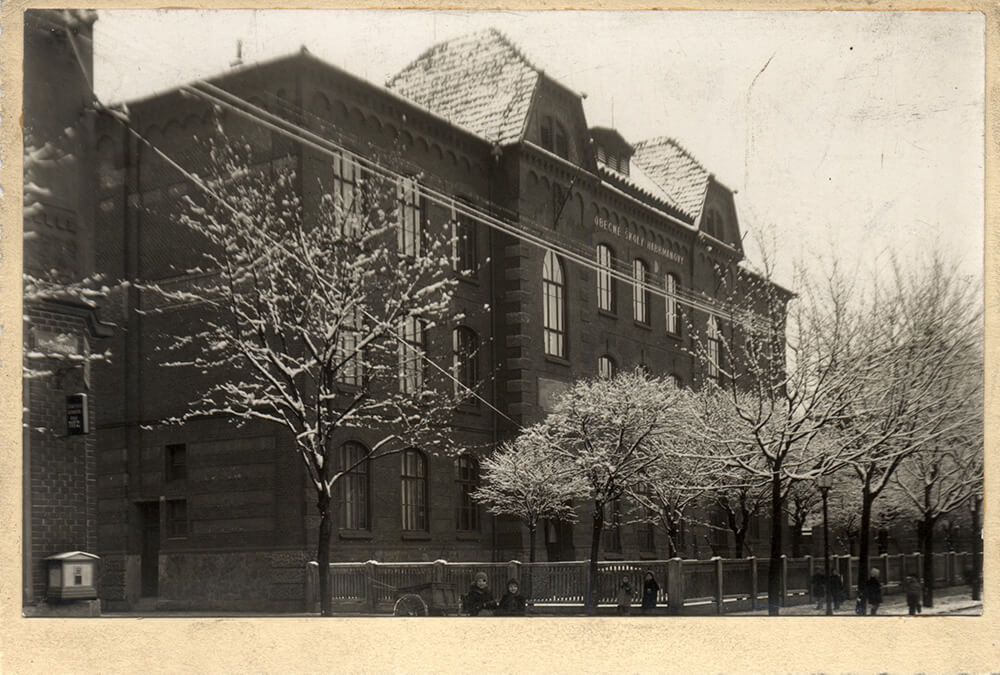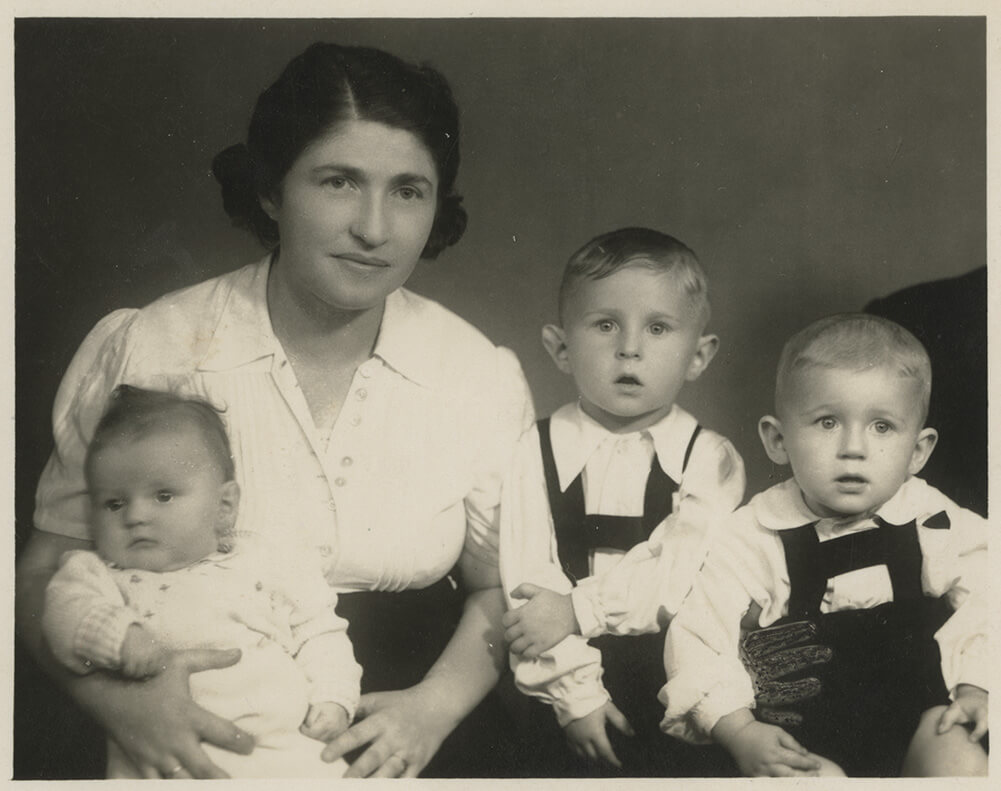Ostrava

Habrmann Boys’ Elementary School in Lassallova Street, Přívoz, which was used as the assembly point in Olomouc.
Statutory City of Ostrava, Ostrava City ArchivesOnly men were sent to Nisko on the first Jewish transports from the Ostrava industrial region in the autumn of 1939. After the commencement of systematic deportations from the Protectorate of Bohemia and Moravia, the main wave of transports from Ostrava came in September 1942. This time, entire families were deported. Deportees were assigned a transport number and summoned to an assembly point at the Habrmann Boys’ Elementary School in the district of Přívoz, which was located near the railway station. Four transports (designated by the letters Bh, Bi, Bl, Bm) took 3,449 prisoners to the Terezín ghetto on 18, 22, 26 and 30 September 1942. The trains left Ostrava Station late in the evening or in the night. Eleven people did not turn up for deportation and two women chose to commit suicide in the Jewish old people's home. On 30 June 1943, a transport (Df) was dispatched from Ostrava, taking away 72 mainly elderly and sick Jews, including physicians from the local old people's home. The last transport (AE 6) was sent from Ostrava to the Terezín ghetto as late as March 1945, taking 53 people from mixed marriages for “segregated labour deployment” (geschlossener Arbeitseinsatz). Among those deported were children aged between three and ten.
In total, 3,754 people were deported from the assembly point in Ostrava. Only 257 of them lived to see the liberation.
